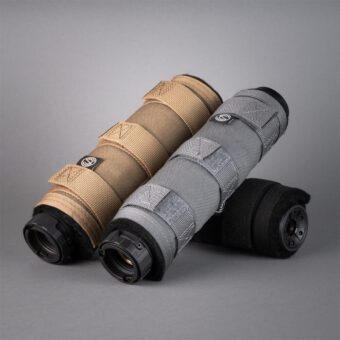Upcoming Changes to Military Small Arms
Travis Pike
The United States military is continually evolving. With the end of the Global War on Terror, we are implementing lessons learned while preparing for the next war. With Russia and China being the focus of the Department of Defense, we’re seeing some radical changes in the world of small arms.
Typically, the small arms world moves slowly. Often overshadowed by our smart bombs, our long-range defense systems, and the sleekest fighters out there. This time, they are taking center stage.

New Threats, New Armaments
The military has a responsibility to prepare for the next potential conflict. More importantly, they need to prepare for the worst potential conflict, which would be against a near-peer enemy.
Our near-peer forces aren’t guerrillas in the mountains or insurgents in the cities. They are well-armed and armored, and our armament has to reach the next level to exceed its capabilities. In the small arms world, there has been a focus on making the average infantryman more lethal.
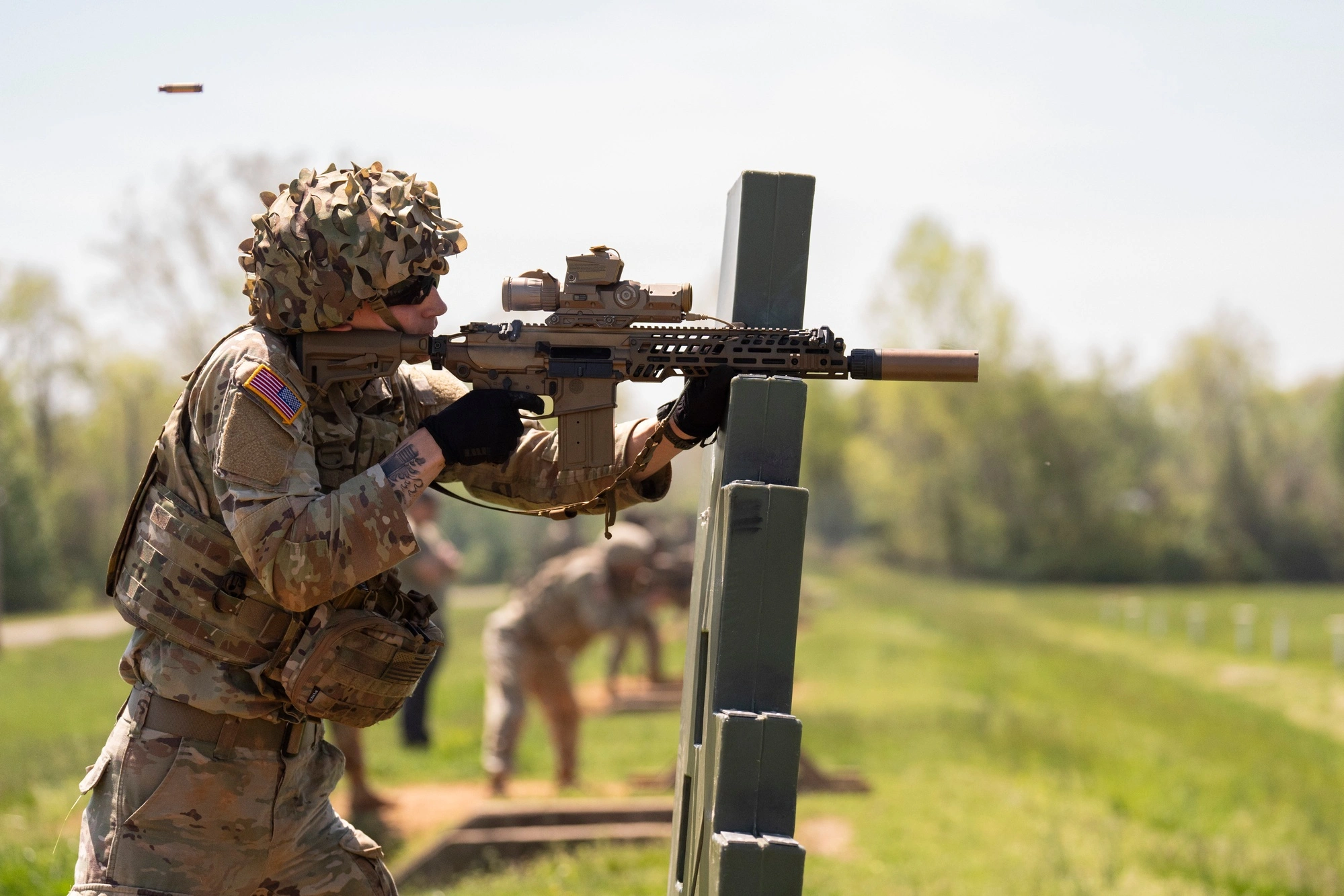
The New Rifle(s)
The Marine Corps was the first to adopt a new service rifle. They did it slowly and seemingly played the long game against the DoD testing requirements. They started by replacing their SAWs with Infantry Automatic Rifles (IAR). That was a fairly long process, but they got it done, and by 2012, the SAWs were on their way out.
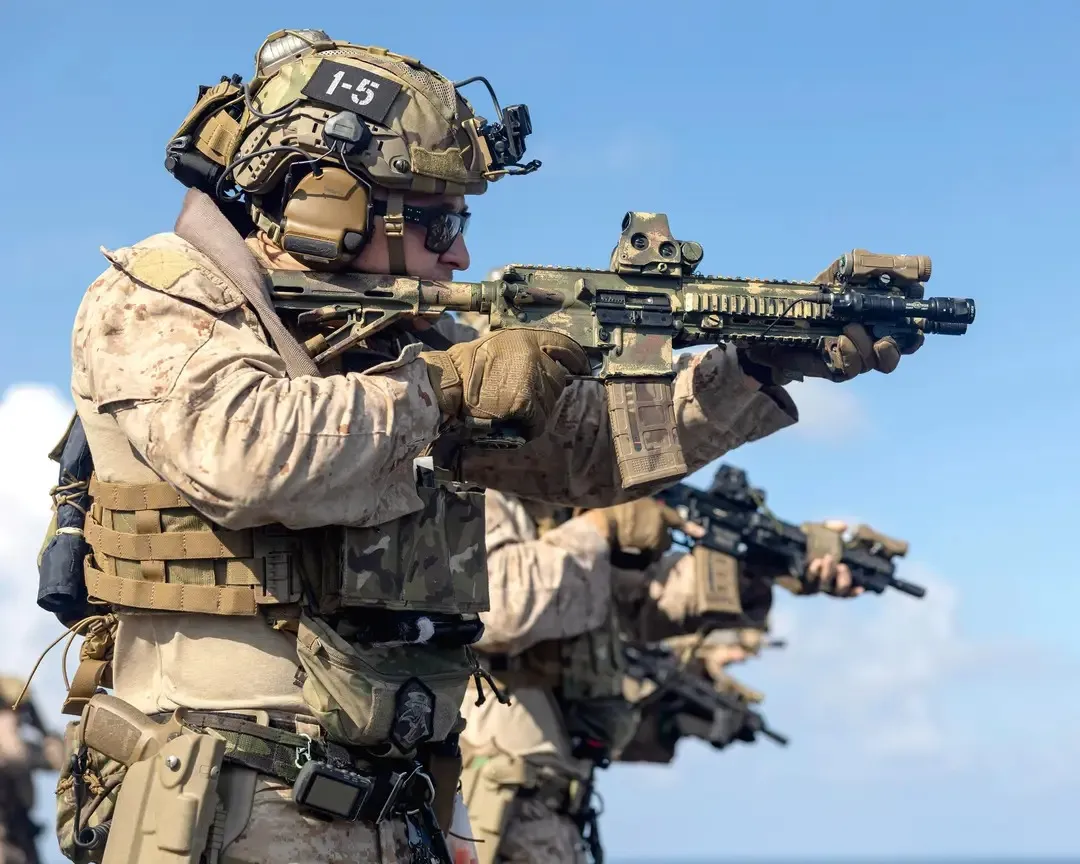
By 2017, the IAR would become the main fighting rifle of the United States Marine Corps. Over time, every infantryman and close-combat Marine would be armed with an M27 IAR, which is a Heckler and Koch platform. It’s very M4-like, but it has a slightly longer barrel and uses a short-stroke gas piston system. The Marines love it.

The US Army started a program called the Next Generation Squad Weapon Program to replace the fighting rifle of every soldier and potentially every Marine. This program aimed for a more powerful rifle and light machine gun chambered in a more powerful 6.8mm cartridge.
SIG Sauer won the contest, and the MCX Spear and XM250 light machine gun would potentially replace the M4 and M249. Both guns would use a 6.8x51mm cartridge and offer more range and armor-piercing capability. The rifle became the XM7 and XM250, and the X stands for experimental. When they become widely issued, they’ll drop the X.

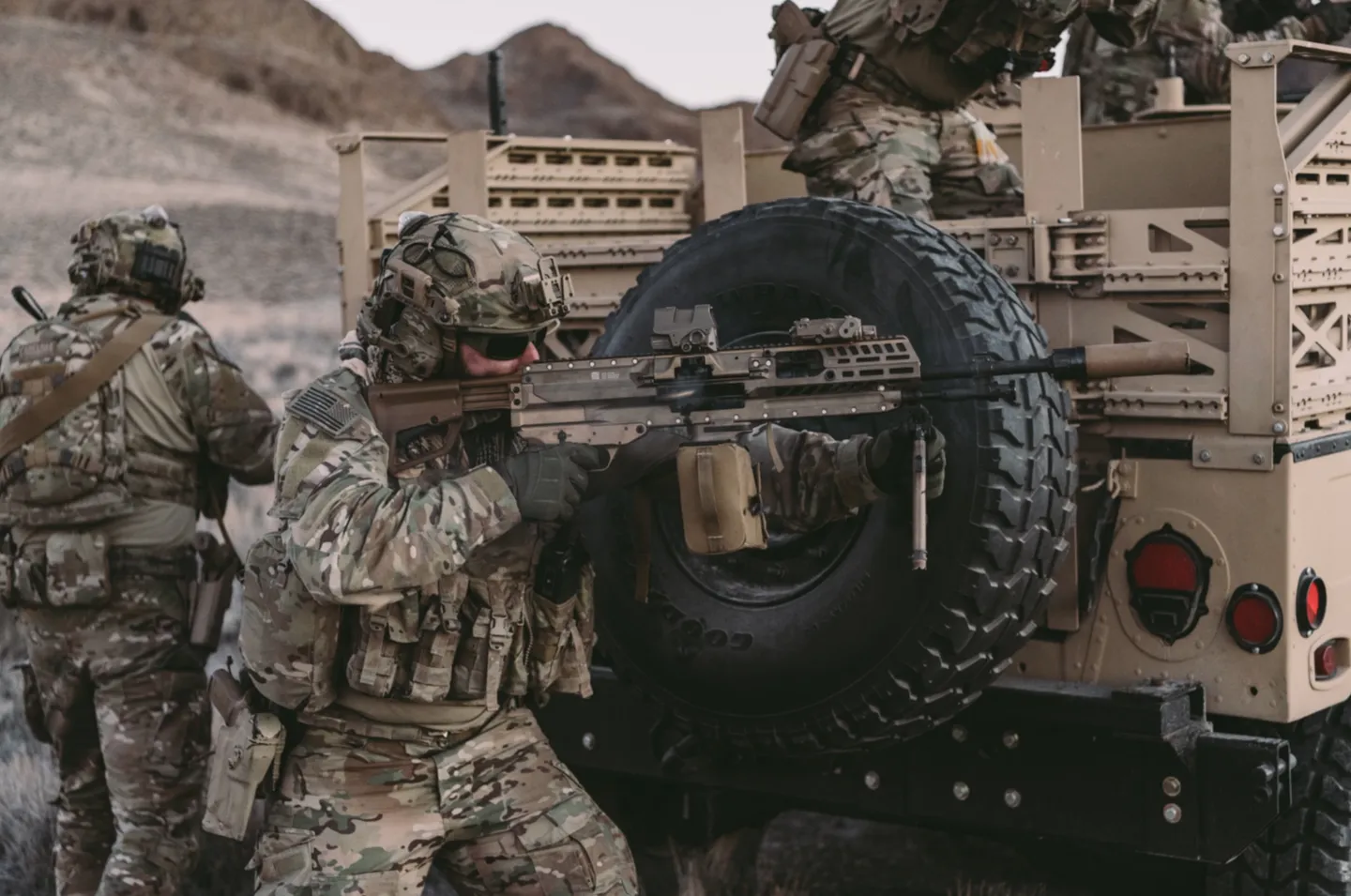
New Optics
A big part of the XM7 will be the XM157 fire control optic. This highly advanced rifle scope gives soldiers a computer and optic all in one. It features an integrated laser rangefinder, a ballistic calculator, atmospheric sensors, a compass, and a digital display. This system will calculate and display an aiming point based on environmental factors, bullet drop, and more to allow the shooter to make accurate shots with ease.
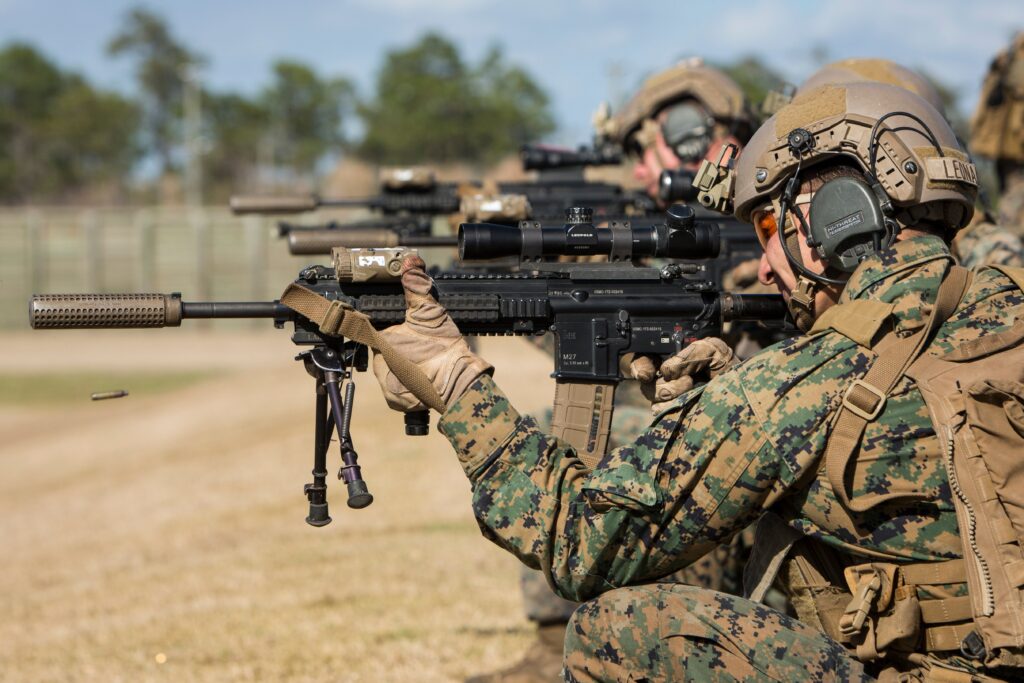
The USMC has always been a big fan of optics. They famously used the ACOG for almost the entirety of the GWOT. They adopted a higher-powered optic as they adopted the M27 IAR and observed its accuracy.
Ultimately, the USMC adopted the Trijicon 1-8X VCOG, a low-powered variable optic. The optic is rolling its way out to the individual Marine to increase their range, precision, and ability to observe and hit targets.

New Suppressors
The USMC started a trend by issuing suppressors to every infantryman. In the mid-2000s, the United States Marine Corps tested suppressors by issuing a suppressor for nearly every weapon in an infantry battalion and conducting a massive experiment.
The end result was that the Marine Corps declared suppressors to be immensely beneficial to infantry forces and significantly increased command and control. With this in mind, when you see Marine Corps infantry, you’ll see them equipped with suppressors these days.
As for the Army, a suppressor is another big part of the XM7 program. The XM7 fires a powerful cartridge from a fairly short 13-inch barrel, which creates some crazy concussion, muzzle flash, and noise. To help suppress this effect, the XM7 series will wear a suppressor. The suppressor will reduce the negative effects of the short barrel and powerful round by a long shot.

A Modern Handgun
I’m still partial to the Beretta M9 series, and that’s largely nostalgia from carrying one. I can admit the M9 lags behind modern handguns. The military has replaced it with the M17/M18 series—the M17 being the full-sized model and the M18 its more compact version. Both are variants of the Sig Sauer P320 series.
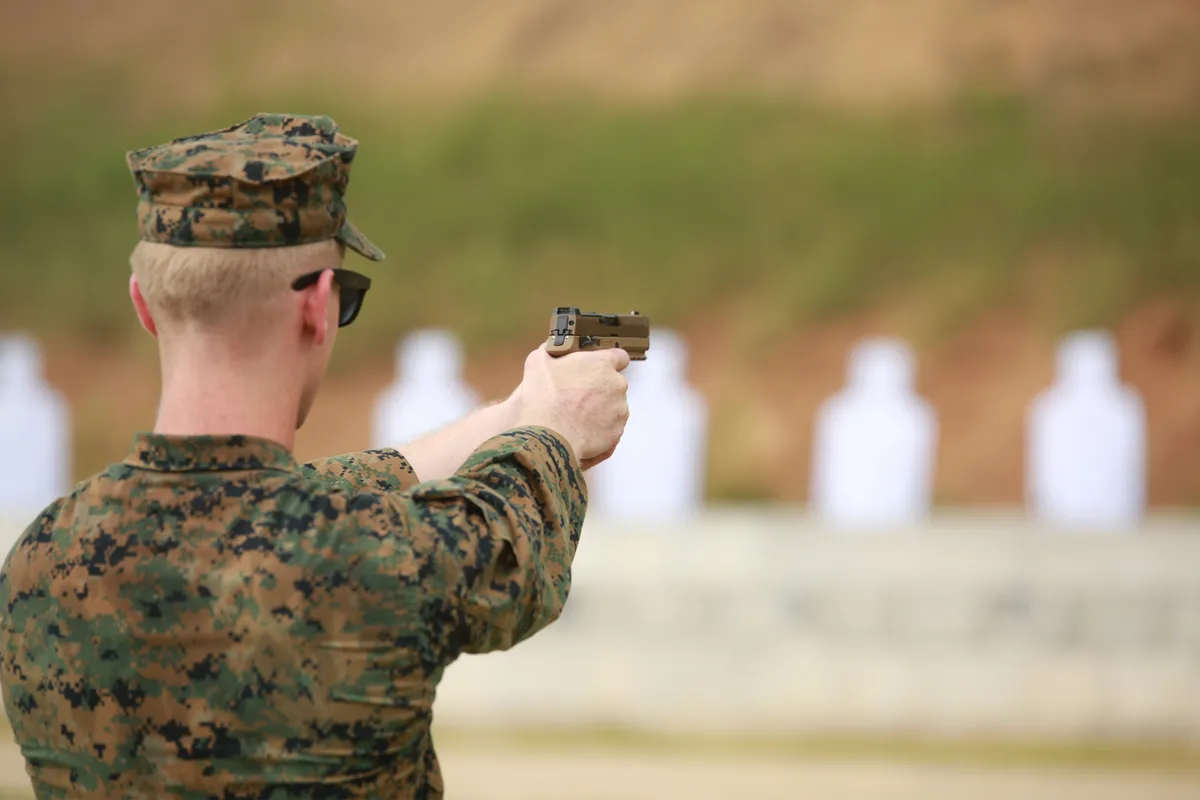
These new modern handguns are extremely modern, featuring polymer frames and striker-fired designs. The M17/M18 series comes ready with Picatinny rails and is optics-ready for a future where red dots rule military handguns. It’s ready for the standard infantry and elite forces.

New Ammo
As mentioned, the XM7 will be firing a new, more powerful round known as the 6.8x51mm. This new cartridge works at extremely high-pressure levels to drive a 135-grain bullet at extreme speed from a short barrel. The pressure is 80,000 PSI! To maintain performance without increasing weight, SIG utilizes a hybrid cartridge with a mostly brass case, but a stainless steel base and aluminum locking washer make up the rear of the cartridge.
This powerful round aims to peirce modern Level 4 armor at various ranges. It outperforms standard 5.56 in the armor piercing department at the cost of increased weight, recoil, and muzzle blast.
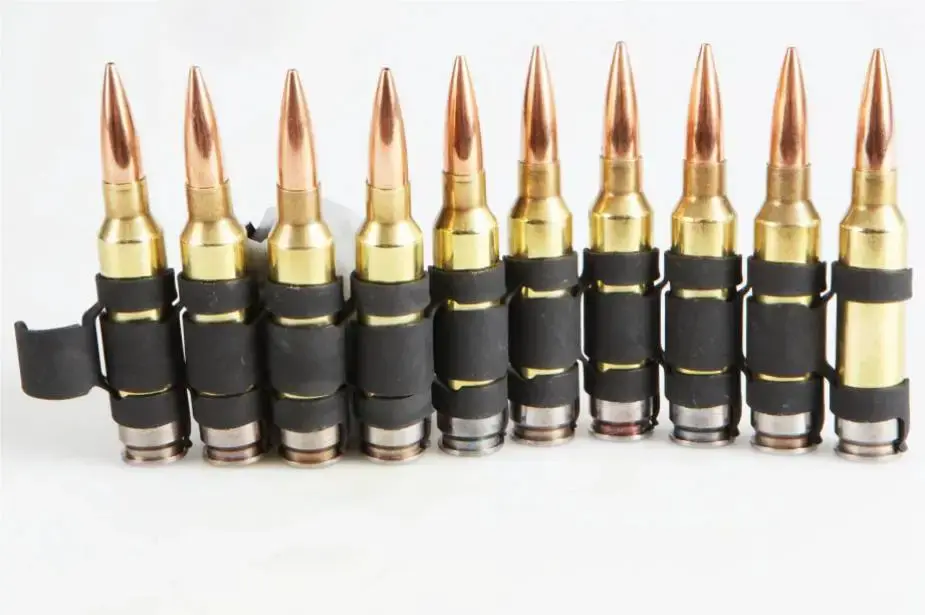
The US Army has also introduced the M855A1, a newer, more capable version of the standard 5.56 round. The M855A1 increases the round’s lethal range, has better hard barrier penetration, and performs better in soft tissue.
The new handguns that arm our troops are also getting upgraded ammo. While it’s still 9mm, the US Army will be using the XM1152 full metal jacket and XM1153 Special Purpose/Jacketed Hollow Point ammunition. The XM1152 FMJs are 115-grain cartridges, and the XM1153 JHP will be a 147-grain cartridge.

Changing Times
Typically, we don’t see massive overhauls of small arms. It’s normally a slow evolution, but this era feels different. A lot is changing at once, and it’s clear that the DoD wants the average infantryman to be well-armed and ready.
The GWOT displayed many advanced munitions and technologies, but it proved that, at the end of the day, the rifleman is still needed for that last 100 yards.







